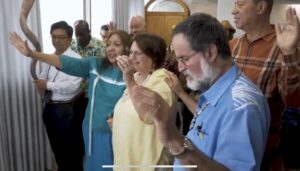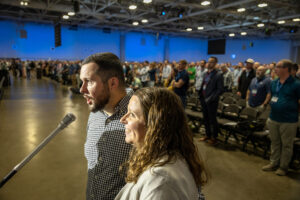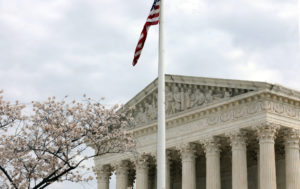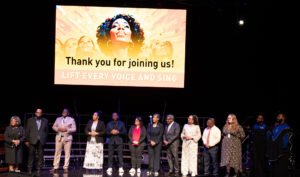
WASHINGTON (BP)–A recent study from a prominent media analysis group finds that religion is getting more news coverage and more journalists are attending church — but also finds that religion reporting frequently reduces religion to politics or internal debates over church authority, the Internet news site CNSNews.com reported May 11.
The study, conducted by the Center for Media and Public Affairs, in partnership with the Ethics and Public Policy Center, studied a random sample of more than 2,300 stories that appeared from 1968-98 in The New York Times, The Washington Post, Time, Newsweek, U.S. News & World Report and the three major network newscasts.
Among CNSNews.com’s summary of the study’s findings: Overall coverage of religion doubled among establishment news outlets from 1980-90, with coverage of “nontraditional” religions such as religious cults and Eastern religions showing the sharpest increase.
However, CNSNews.com noted, the study found that only 7 percent of stories overall mentioned specific theological or spiritual beliefs, instead focusing on religious groups or churches involved in public policy debates, debates over sexual morality, women in churches, or groups advocating for changes in church hierarchy or practice.
The study also found a wide disparity between discussion of the theological beliefs of Protestants, Catholics and Jews (5 percent of all stories) versus the beliefs of Eastern religions such as Buddhism or Taoism (26 percent of all stories), CNSNews.com reported.
The study also found a sharp increase in the number of stories about clergy or churches involved in crimes or misconduct, most often sexual. These stories made up one in every 50 religion stories in the 1970s but rose to one out of every 14 in the 1990s.
Finally, the study reports findings from the Center for the Study of Social and Political Change, which said the proportion of major media journalists who attend church regularly jumped from 14 percent in 1980 to 30 percent in 1995, while the number of journalists claiming no religious affiliation dropped from 50 percent to 22 percent over the same period.
Dan Amundson, CMPA’s research director, told CNSNews.com the lack of theological content in religious news coverage was “surprisingly consistent over 30 years.”
“We really didn’t see strong trends one way or the other, besides a general increase in religious coverage,” Amundson said.
Amundson said he was satisfied with the methodology of the report, adding that a random sample was “the only compromise that made sense in terms of getting all possible religions in there.”
But Tim Graham, the director of analysis for the news watchdog group, the Media Research Center, told CNSNews.com that despite the report’s findings, he was hard-pressed to conclude that the media had moved away from what he called a “native hostility” to religion.
“Most people would be surprised to say there was some sort of increasing religiosity on TV,” said Graham, who has authored several studies on media bias and is the author of the weekly publication Media Reality Check. “Usually, the media doesn’t find religion newsworthy unless it threatens somebody’s sexual liberation.”
The Media Research Center was founded and is chaired by L. Brent Bozell, the publisher of CNSNews.com.
Graham said studies on religious news coverage could come up with widely varying results, depending on what stories were or were not defined as religious.
“I tend to have a narrower definition,” Graham said. “Some people, including CMPA, would count every story on recovering Jewish money from Swiss bank accounts or on the standoff at Waco. I wouldn’t.”
Bob Abernethy, a former NBC News correspondent and present host of the PBS show “Religion and Ethics Newsweekly,” a critically acclaimed weekly broadcast on religion, said he believes there have been “significant improvements” in religious news coverage among the mainstream media, especially the print media.
“There are now special sections on religion at the Dallas Morning News and the Minneapolis Star Tribune and other places, and there are some very thoughtful religious writers at a lot of papers right now,” Abernethy told CNSNews.com, though he added improvements in religion reporting at television networks have been “much slower.”
Abernethy said he believes the trends reflected “a belated recognition that religious matters are important,” as well as pressure from journalists who find religion reporting interesting.
While stressing the importance of covering “institutional conflicts and battles over [church] practice,” Abernethy said there is room in a secular media outfit for religious reporting that includes “a theological and spiritual grounding in the issues discussed.”
“If you don’t do that, you’re missing a huge part of the story,” Abernethy said. “It’s not preaching, it’s not proselytizing, it’s just good reporting that gets at the things that drive people who participate in religious activities.”
Torres is the senior staff writer for CNSNews.com and this story originally appeared on the CNSNews.com website May 11. Used by permission.













